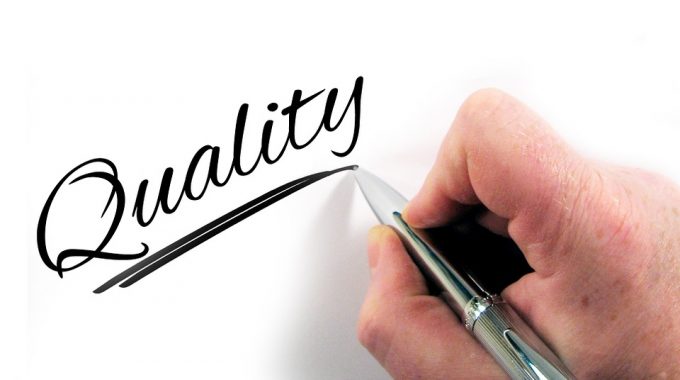In one of my previously published blogs, I’ve talked about the importance and the different philosophies of quality. And, today we’ll learn more about the different tools and techniques used in quality control, quality assurance and quality management.
Readers’ Warning: It will be quite long and a bit boring, but please bear with me.
What Is Quality Control?
Quality Control has been the oldest and most commonly used tool to inspect and verify products and services. It has been primarily concerned with the inspection and certification of outgoing products using applicable means of inspection and sampling techniques.
While it is mostly about detection, on the other hand, quality assurance is mostly about prevention.
What Is Quality Assurance?
Quality Assurance is all about prevention and detection of non-conformance at an earlier stage. It is an intensive exercise for assuring conformance, mostly than quality control.
What Is Quality Management?
Quality Management is a well-known and widely accepted instrument for quality assurance practice and customer satisfaction, using quality control techniques in all spectrums of business operations. With this, we now have the quality management system which, in simple words, means “A systematic way to measure the needs and expectations of customers and other interested parties”; and to realize, there is also a component called quality planning which involves the translation of a quality policy into measurable objectives and requirements within a specified time frame. This can also take the form of quality plans for each improvement project undertaken within an organization.
Now, despite having different meanings, the terms “quality assurance” and “quality control” are often used interchangeably to define possible ways of ensuring the quality of a service or product. It often becomes difficult to pin down the origins or the real meanings of each of these terms.
The Three Spheres of Quality

The quality management using a three-sphere approach encompasses quality management, quality assurance, and quality control (you can even google the diagram). Although this approach may seem easy to understand at first glance, it truly shines when put to the test.
You can maybe try an exercise. For instance, try to find a quality event that belongs in each of the seven areas that can be obtained by drawing up a Venn diagram. For example, rolling out a new corporate program that tests the process capability of manufacturing processes would most likely fall into the overlap between quality management and quality control. However, arguments may be made for alternative placement. After completing the exercise, reflect on which areas were the hardest or easiest to place definitively and which areas were the easiest or hardest to populate (reflect on how common examples are).
Quality Assurance and Quality Control Tools and Techniques

The concepts and methods which today form the basis of quality procedures were developed, mainly in the United States and Japan, in such industrial environments during the Second World War. The main objective was to make production processes more systemati by reducing faults and errors – one of the slogans was “zero tolerance for error” – and to produce goods of consistently high and standardized quality. In order to attain this aim, a number of procedures and principles were developed.
At one point, it was realized that improved quality was not to be achieved through technical progress alone. This was more specifically for Japan’s case – it was emphasized that the responsibility for the quality of the product should be in the hands of those producing it and never with outside workers and those people worked best if they formed teams and were able to organize their own work flexibly and intelligently. “Quality circles”, small teams who were motivated to provide suggestions and to take quality initiatives, were conceived as a way of promoting the desired approach and attitude. It was stressed that correcting mistakes were costly and time-consuming and that, hence the aim was to “get it right the first time, every time.”
The notion of quality management can also be applied to the provision of services as well as the production of goods. As these are not tangible in the same way as goods, the principle of customer satisfaction has been devised and quality has been equated with this – slogans like “quality means meeting customer expectations” or “quality symbolizes exceeding customer expectations” have been used. In the provision of services the “deal” between the producer and the consumer of services is a completely relational one and the quality of the service is often equated through the keeping of promises which are expressed in the shape of “customer charters” or service guarantees. Take a railway promises, for example, if its trains do not arrive within x minutes or the announced time the customers will have part of their fare re-reimbursed. Let’s take another example: Say a hotel chain that gives guarantees about the speed or range of services provided. An essential element of quality in services would be to establish a crystal-clear description of what is provided- “say what you do/do what you say you do”.
Stay tuned for part two.




